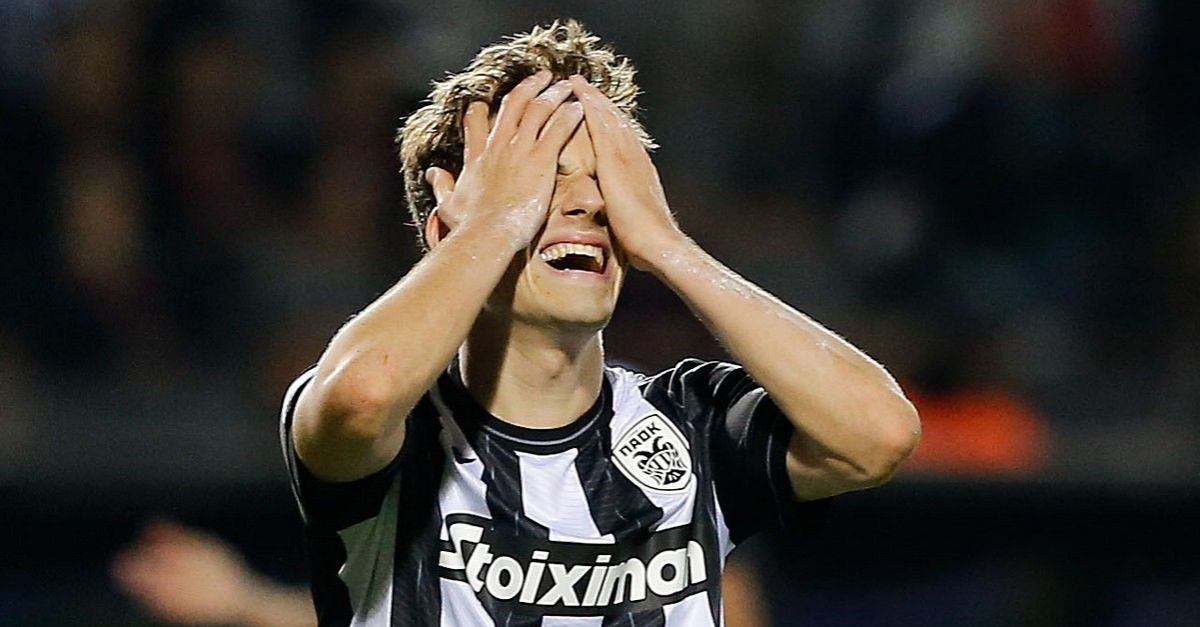[ad_1]
How are the goals scored by Lucescu’s team in the league compared to last year? Who are lagging behind and who have taken on the “goal case” and how the Two-Headed Man can raise his productivity to new heights
“PAOK loses its games because it doesn’t have the easy goal”. “Dicephalos’ forwards don’t score”. The problem that the “black and white” have in the attack is obvious.
Razvan Lucescu’s players do not capitalize on the opportunities created either by themselves or their teammates, resulting in games and important points being lost and the Two-Headed Man not usually getting what he is entitled to on the pitch.
How can a team that last year he had scored more than 130 goals in all competitions to have a goal problem a few months after winning the championship?
How is it possible that he is not finding solutions in attack, when last summer he spent millions to strengthen his attack line with the acquisition of Fedor Chalov and Tarik Tisundali?
Has the aggressive pluralism that was one of the great weapons for the champions of Greece lost last year?
The truth is that, at least as far as the league is concerned, the situation seems to be somewhat… confused. In any case, however, PAOK has not lost its ability to score goals from all its lines.
On the contrary, he has put more players on his list of scorers than he had last year after 11 games.
He was in the same number of games last season eight footballers who had scored 20 of the 21 goals which the Thessaloniki team had achieved (there was also an own goal), while this year there are 11 PAOK players who have scored 18 goals (and this year there is an own goal).
Which means that not only has the attacking pluralism of Lucescu’s team not diminished, it has become even more pronounced.
So why does PAOK show an image of a team that doesn’t score as easily as it did last season, a championship for him, when many times its players seemed capable of getting the ball into the opposing nets?
50% off
The answer is rather easy. Because even last year there was the “problem of forwards in the goal”, with the strikers not scoring as much as one would expect, there are fewer goals contributed by his midfielders this year.
And in fact, this year’s goals he has scored from his midfielders are 50% off in relation to what they had scored in the first 11 matches of the last championship.
Of the ten goals scored last year by Zivkovic (six), Constantelias (two) and Murg (two), this year the Serb has scored two, the Austrian one and Despodov and Tyson one each.
Half of last year’s (three this year, six last year) have also been contributed by strikers with Tisundali scoring two and Chalov one. Last year Brandon had already celebrated three goals, Samata had two and Jimas one.
With the productivity of forwards and midfielders halved, PAOK cannot take advantage of the fact that their other two lines are scoring more than last year.
The defense has given three goals so far (Baba two, Sastre one) while in the first 11 of the last season only Koulierakis and the central midfielders had scored another seven compared to three last year.
Schwab with four, Kamara two and Ozdoev with one are currently PAOK’s most reliable scoring line.
What does all this show? That in order for PAOK to become more productive in scoring, they should first of all get more goals from their midfielders.
From the line that has undergone the least changes compared to last season, but presents itself completely differently in its statistics.
Živkovic has 1/3 of the goals he scored up to matchday 11 last year and Constantelias is yet to celebrate a league goal despite finishing more phases than last season.
The issue with the forwards, it seems, is no longer just about the faces but also about the style of play of Dicephalos, which makes the strikers play for the team and not the team playing for them.
PAOK’s 11 scorers in the league
- Swab 4
- Arch 2
- Daddy 2
- Zivkovic 2
- Tisundali 2
- Ozdoev 1
- Murg 1
- Despodov 1
- Chalov 1
- Tyson 1
- Tailor 1
[ad_2]
